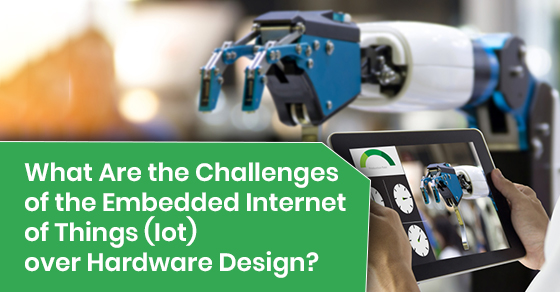What Are the Challenges of the Embedded Internet of Things (Iot) over Hardware Design?
Designing hardware, regardless of your level of expertise and experience, can be a challenging task. How successful an IoT product is, is determined by the quality of the hardware design. The design phase of IoT products requires great focus to ensure that they function as intended. They must be reliable, secure, and consume the least amount of power possible.
There are many challenges involved in this process. Problems must be overcome in order to maximize the devices. Here, we will discuss some of the main challenges that hardware designers in Waterloo, Ontario, must overcome.
Flexibility Issues
Running applications over embedded systems can prove to be a problem due to insufficient flexibility. Currently, the demand for devices to connect to multiple devices is the strongest it’s ever been. As such, today’s embedded products need to function with various devices and also adapt to many different networking architectures. This is because these products must adapt to performances and new functionalities that occur in actual real-time settings.
In other words, hardware designers can struggle to deal with the deployment of certain applications, as well as the increased rate of technological advancement around the world.
Designers may struggle with the proper integration of new services. Adapting to new ecosystems may also prove to be challenging. Many will need to work around the clock due to marked fluctuations at software depots, as well as protean changes in the hardware itself over time.
There can be issues involving integration and the packaging of IoT products. The systems will need to have a chip size that is very small and must also have a low weight while consuming less power. As such, nanotechnology must be a priority for hardware designers, and they also need to work hard to issue forth energy awareness initiatives.
Security Issues
IoT systems must, at all costs, perform securely in any real-time setting that is embedded. It is important to note that all of the components and nano-components function in embedded situations that are physically insecure and very resource-constrained. Thus, many engineers can face serious challenges in trying to keep these embedded components secure in real-time environments.
However, with some hard work and diligence, it is possible to design and implement IoT systems that are reliable and robust. The systems must also be secured with the latest security protocols and the latest cryptographic algorithms.
In sum, the engineer, or team of engineers, who are working on the IoT system must be resourceful and innovative. They must take different approaches to ensure that all of the components within the embedded systems are 100% secure, from the prototype phase to the final deployment phase.
Power Dissipation Issues
Another limitation that can prove to be very frustrating for many hardware designers is power dissipation in regards to hardware design for various state-of-the-art microprocessors. The challenge lies in maximizing performance out of multiple devices as well as applications in real-time settings.
The goal is to create a top-of-the-line embedded IoT system that has additional transistors, while also maintaining a correct power consumption ratio. However, there are currently two lead causes of high power dissipation when low-power systems are fabricated.
First, as gate density increases, the power dissipation of each transistor will also rise. Ergo, the power density of chip systems will also subsequently increase. Engineers will need to go above and beyond the call of duty by not solely relying on process technology, as was often the case in the past.
Instead, they must work vigorously to reduce the power consumption levels of the embedded systems that they are working on by implementing a system architecture design that is leading-edge and very efficient.
Second, the engineers will need to increase system frequency, which will lead to added power usage. IoT systems will achieve results of superior performance, while also consuming the lowest amount of power possible, essentially allowing the system to enjoy the best of both worlds.
Testing Issues
For reliable product design to be achieved, validation, verification, and meticulous testing protocols will need to be adhered to without exception. First, embedded hardware testing must be performed, whereby developers use hardware-based test tools. It should also be mentioned that the integrated hardware-testing stage is similar to all testing types used in this industry.
The second stage is verification, which involves determining if the functional verification has been administered as intended. The third challenge requires validation, whereby the developers will evaluate the system to ensure that it matches with the prerequisites and adheres to all quality standards. Failure to pass the testing phase will require modifications and re-testing until all tests are passed without incident, which may prove to be yet another challenge for the team involved.
Circuits Central
If you would like to learn more about the hardware challenges involved in IoT system design, then we can help. Circuits Central specializes in hardware design and manufacturing, and our expertise allows us to meet the discerning needs of our hardware design clients without compromise. We also work with clients in many different industries, including the medical, military, commercial, communication, consumer, and aerospace industries.
To learn more about our proprietary hardware solutions, which include a la carte solutions, manufacturing and integration, and design and engineering, please visit our website. You can also contact us at 888-821-7746 for a free, no-obligation quote and consultation.
Sources
https://www.einfochips.com/blog/hardware-design-challenges-of-the-embedded-internet-of-things-iot/#utm_source=EIBlog&utm_medium=BlogPostRiya&utm_campaign=related-blog

